Our Favorite Slow Travel Destinations: Greece, Panama, and Mexico
14 min readMy wife Rita and I have done a lot of traveling over the past fifteen years, and we have tried just about every type of travel. We’ve explored parts of the US, the Caribbean, Central and South America, and Europe. We’ve tried the typical tourist trip where you cram as many activities and historic sites into a week or two, and we have even lived as expats in Ecuador for almost six years.
But by far, our favorite way to see the world is a way that has been growing in popularity recently — “slow travel.” We like it so much that earlier this year, we sold our home in eastern Tennessee and devoted the next few years to practicing the art.
In all sorts of beautiful, welcoming, culturally rich, saner places around the world, you can live well from $2,000 a month (all in, housing included). Sign up for our free daily IL Postcards e-letter and we’ll immediately send you a free report on the WORLD’S # 1 RETIREMENT HAVEN— plus 9 more spots you should have on your radar. Each day, you’ll earn about the best places to move to, retire, travel, buy real estate, and enjoy a good life for less, overseas.
By submitting your email address, you will receive a free subscription to IL Postcards and special offers from International Living and our affiliates. You can unsubscribe at any time, and we encourage you to read more about our Privacy Policy.
The basic idea is to spend more of your travel time trying to form a deeper connection with your destination. Ideally, you stay two weeks or more, but we have found that slow travel is more of a state of mind than a function of the calendar. Let’s face it—the traditional one—week getaway is really only five days, as the first and last days are truncated by travel. Our goal is to experience the destination in a slower, more relaxed manner. Also, much of the cost of, say, a trip to Europe is getting there and back. Once you are in Europe, South America, Asia, etc., it is much more affordable to move around. So one long stay can be more affordable than several short excursions.
The slow traveler is sometimes referred to as an “untourist”. This doesn’t mean you never visit tourist attractions. After all, when we spent ten days in Istanbul, it would have been ridiculous not to see the Hagia Sophia or the Blue Mosque. But an untourist or slow traveler is not solely motivated by the typical tour stops. We also spent time sampling the local foods, walking through the neighborhoods, talking to locals, visiting the local markets, and living in a community rather than a downtown hotel.
We also try whenever we can to travel during the “shoulder seasons”, before and after the main tourist months. Not only is it generally less crowded, but we find prices for food and shelter are a little lower. Choosing to stay where you can walk or use public transportation is also a good idea. When you are in it for the long haul, renting a car is just too expensive an option, and in larger cities, parking is becoming a nuisance. Public transit in many foreign countries is convenient and inexpensive. Uber is available in many destinations, and where it is not, you can often find a local ride-sharing app to help you get around.
To give you a better understanding of what it can mean to embrace the slow travel lifestyle, let’s take a look at three of our favorite destinations so far—Greece, Panama, and Mexico. Each of these are very different countries, but they all provided us with excellent and educational slow travel experiences.
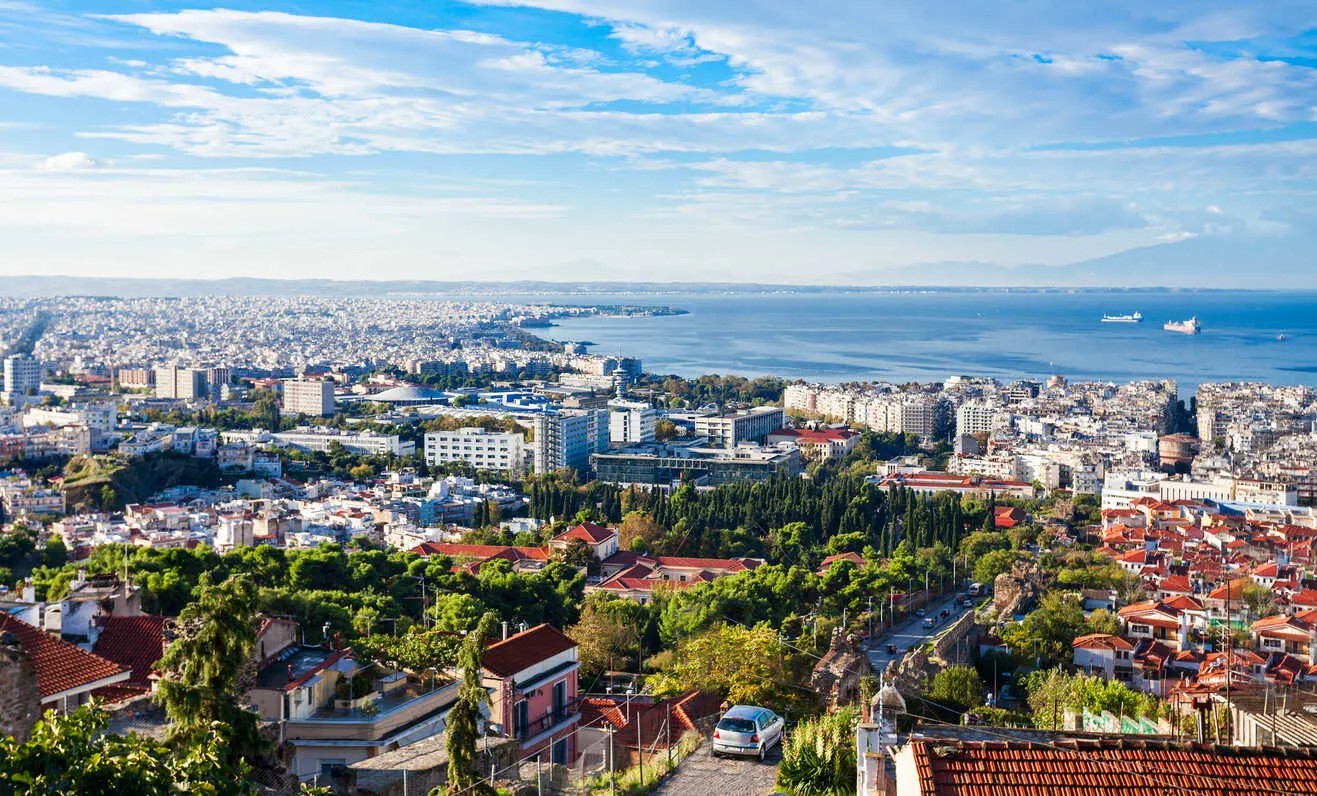
Thessaloniki, where ancient ruins meet modern life.|©iStock/saiko3p
Birthplace of ancient myths and legends, the Olympics, philosophy, and democracy; home of historical figures like Aristotle, Homer, Socrates, and Alexander the Great; a mix of cultures spanning thousands of years. Greece is a country that looms large in the history of modern civilization and in the hearts of travelers around the world. With so many things to see and do, it is certainly a worthy pick for a slow travel destination.
Last fall, we spent twenty days in Greece as part of a nine-week journey through parts of Europe, splitting our time between two cities: Athens and Thessaloniki. In both cases, we stayed in Airbnb so we could have plenty of room, a kitchen, and laundry.
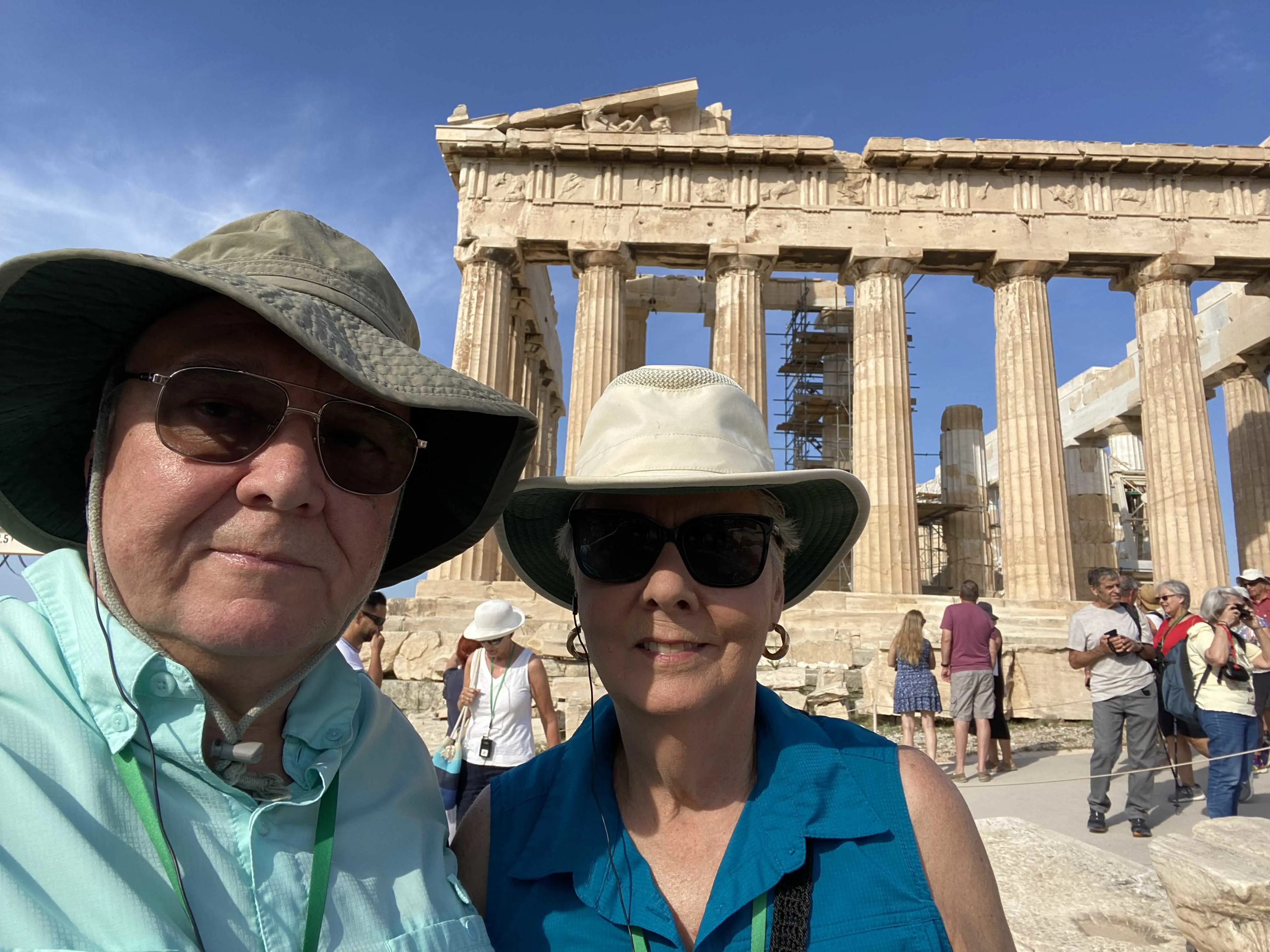
Jim and Rita exploring the ancient wonders of Athens|©Jim Santos
We started off in Athens, in a one-bedroom apartment just a mile from the Acropolis but tucked into a little neighborhood out of the fray. Arriving after a bumpy overnight flight that didn’t let us get much sleep, once we dropped our bags, we were pleased to find that there was a collection of a half dozen restaurants sharing a shady open-seating area just a block from our new home. Even better, on the corner was a convenience store where we could pick up some supplies for breakfast, beverages, and so on.
Athens is definitely a tourist destination. But we had enough time that we did not feel like we had to rush around to see everything all at once. We had picked our location so that most of the sites were within walking distance, and Ubers were plentiful and easy to get if we wanted to venture farther from home.
For us, walking is a key feature of slow travel. It allows you to really see what is around you and gives you time to stop and linger at anything along the way that catches your eye. We love self-exploration on the road, and in fact, we only signed up for two organized tours during our ten-day stay.
One tour was of the Acropolis and the Acropolis Museum. We mostly signed up for this one in advance so we could be sure to get tickets for entry first thing in the morning, as mid-September can still get very warm in Athens. The other was for the Temple of Poseidon since that got us a bus ride out to the Cape Sounion peninsula, a good 45-minute drive from our apartment.
We strolled around the Agora, saw the Temple of Zeus, and enjoyed walking through the parks and markets, but I have to say what impressed me most about Athens and Greece in general was the food. Really, the whole dining experience. The only place we ate indoors was when we ate at home. Every restaurant had outdoor seating under large umbrellas or, most often, shady trees.
As we absorbed the deep sense of history, what impressed me most was a fact I never learned in school. I always knew it was a center of art, philosophy, and trade—but what I didn’t know was that after various wars with the Ottoman Turks and the Greek War of Independence, Athens had been so ravaged that the population was down as low as only 4,000 people just 200 years ago. Since that time, it has exploded into a city of over three million.
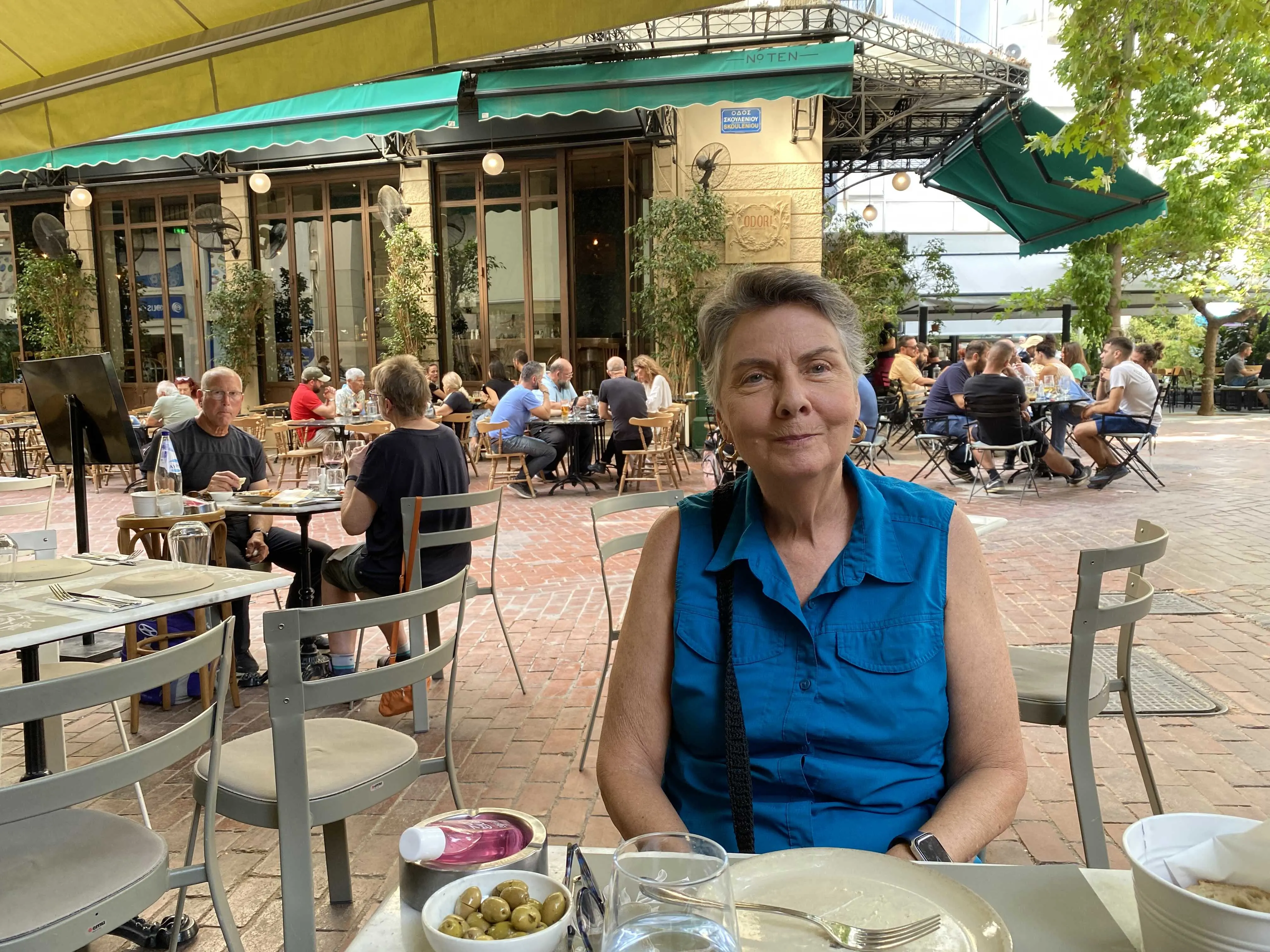
Rita at a charming café in Greece. |©Jim Santos
From Athens we took a hopper flight that cost us less than $100 for the two of us to the Macedonian city of Thessaloniki. Again, we had a comfortable one-bedroom apartment where we could do our laundry and prepare meals if we liked that was centrally located to shops and restaurants.
Although not as touristy as Athens, Thessaloniki is a popular cruise ship stop. Like much of Greece, you can’t go far without a reminder of the rich history of the city as well. After all, this region was the birthplace of Alexander the Great, and the city itself is named after his half-sister. The New Testament books First and Second Thessalonians were letters sent to the newly founded Christian church there. Although there is a dispute as to whether that original church still exists, there are churches there that date back to the first century.
We did not sign up for any tours in Thessaloniki; we just purchased a pass good for admission to four museums and historical sites and took our time over a few days walking around and exploring on our own. The museums we visited were all equipped with audio guides, so we still got our fill of facts about what we were seeing.
The town is a fascinating blend of old and new, due in part for two reasons. First, unlike Athens, Thessaloniki’s position as a major port and crossroad for trade made it important to conquerors, so it was kept largely intact. Then, a major fire in August of 1917 destroyed a large part of the city. It was rebuilt based on modern city planning, so walking from the new city up the hill towards the Old Town is like moving back in time.
Thessaloniki is a working city and busy port, and also the home to Aristotle University is the largest in the Balkans and attracts students from all over Europe and the world, which gives a cosmopolitan feel to the shops and menus of the restaurants. Like Athens, we found the food to be exceptional, and we were surprised to find that ice cream made from goat’s milk is creamy and delicious.
Our time in Greece was easy on the pocketbook as well. We averaged $70/night for our apartment stays in accommodations much larger than a hotel room, which would have cost much more. We saved additional money by having some of our meals at home and not needing to hire a car or tour group to get around. All in all, our 20-day stay in Greece cost us about $1800, enjoying our trip the slow travel way.
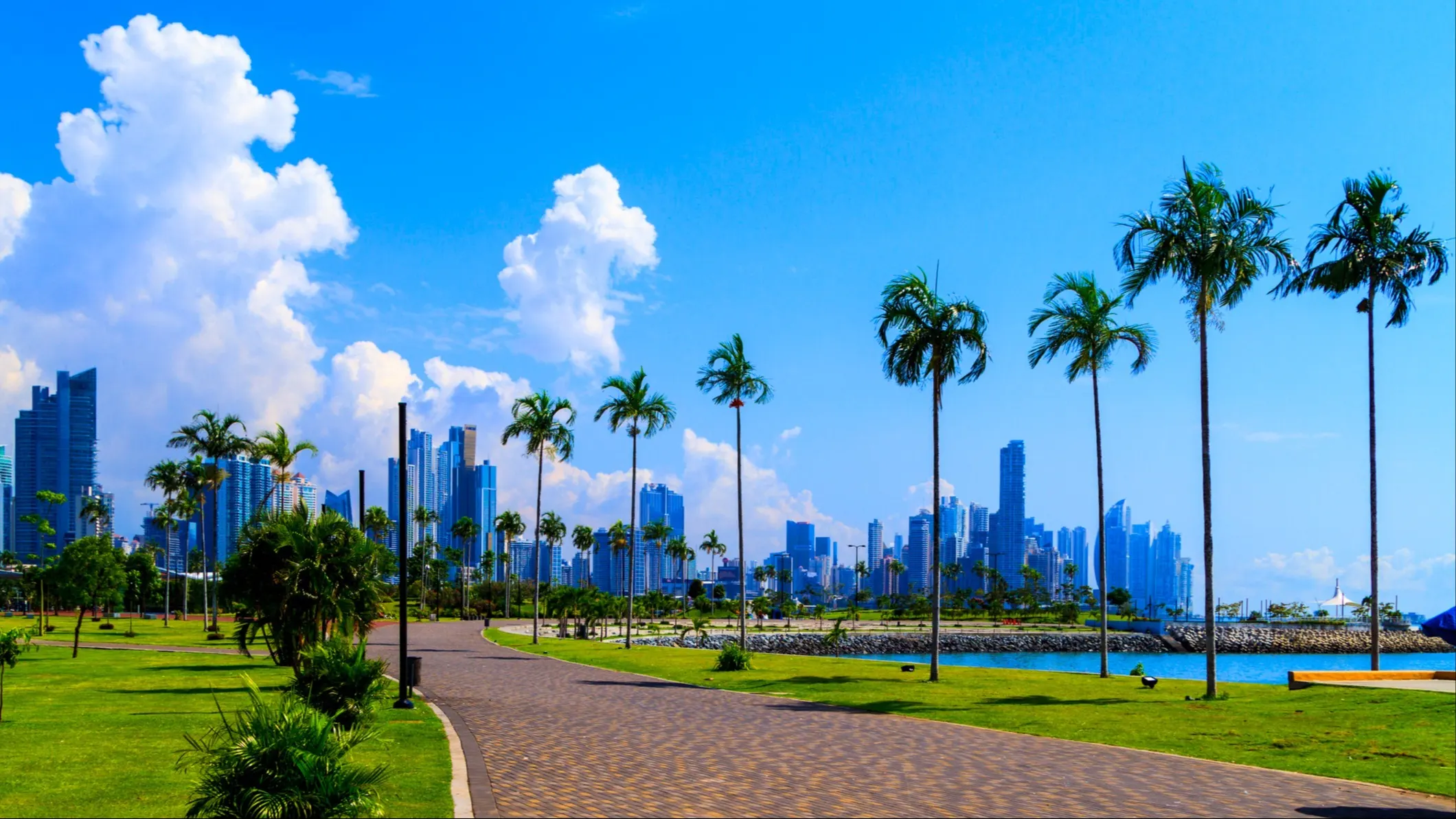
©iStock/Photoservice
Our slow travel journey to Panama was mostly sparked by one desire—staying warm during the winter. The previous year, we spent a few weeks in Florida, which was incredibly expensive. Part of the time, we stayed with family who were renting a small two-bedroom apartment for $4,000 a month! This year, we decided we could do better than that.
Panama was an obvious choice. Flights to Panama City would not have us on unbearably long flights, and they were reasonably priced, so it would definitely be warm. So we did some research, and booked a one-bedroom condo in Panama City right by the water for the month of January, and a two-bedroom condo on the ocean at the beach resort Playa Coronado for February and half of March, with a total costs for ten weeks of lodgings just $3,750.
Actually, that pricing is a little lop-sided, as the month in Panama City was about a third of that total. Of course, we knew that going in, we would pay a higher price for an oceanfront resort at a time of the year that is very popular with snowbirds. Still, this made our average cost for places to stay just $375/week, less than $55/day.
It’s hard to overstate the role the Panama Canal played in worldwide shipping or the economic impact it has had on Panama. With mountains in the west, Caribbean beaches to the north, a Pacific to the south, and the big-city excitement of Panama City, it was a natural destination to choose for slow travel.
We started in a modern high-rise condo building with a stunning view of Casco Viejo (the Old City) and the Pacific. Even though we were in the heart of the city, we were only a few blocks from a wonderful local market where we could find fruits, vegetables, chicken, beef, and pork that was twice as fresh and half the cost of shopping in the chain grocery stores. The fish market was even closer, so we found ourselves preparing many fine meals at home.
Not that there weren’t great restaurants to sample as well. We dined several times alone, or with expats we met in some of the many fine dining options to be found in Casco Viejo. For more inexpensive fare, there was a selection of stalls serving seafood at the fish market. Seafood doesn’t get any fresher than that!
In addition to checking out some local museums, we did a few side trips. We took a ferry to Taboga, an island just off the coast for a day at the beach. We visited two of the largest malls in Central America, and what visit would be complete without a look at the Miraflores Lock on the Panama Canal?
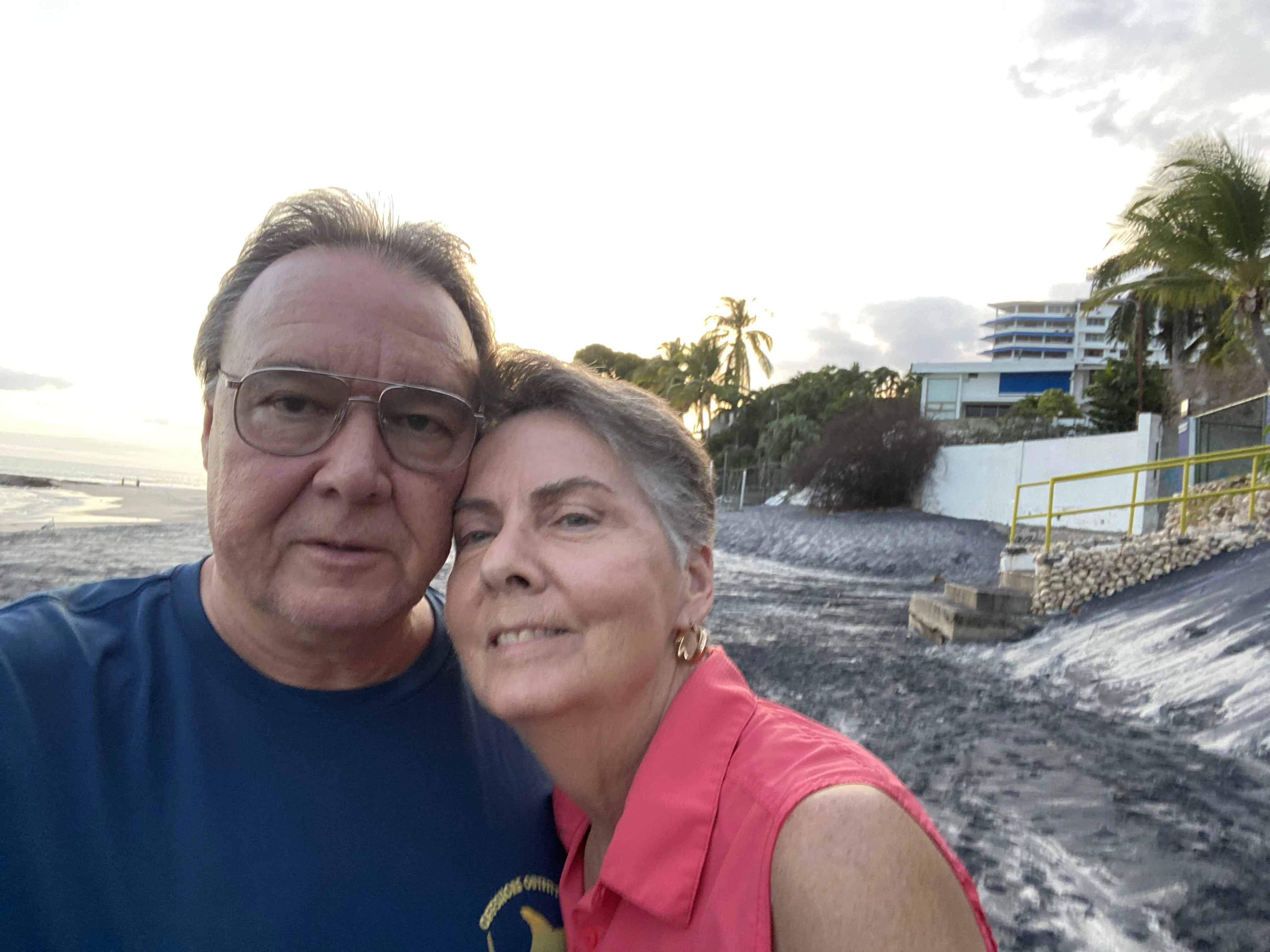
Taking in the coastal charm of Coronado, Panama. |©Jim Santos
Next up was Playa Coronado, about an hour and a half west of the city. This turned out to be a little more remote than we had expected. Although there was a large number of expats in our beachfront condo, there were not many restaurants in walking distance. While in Panama City, we could call an Uber and have an inexpensive ride in minutes, there was no Uber service in Coronado. We had to walk out to a cab stand, or ask one of the staff to call a cab for us.
Worse from our perspective, there was not a local produce or fish market. Still, a short cab ride from the beach there were at least four large chain grocery stores, so we were able to keep supplied. Speaking of food, the restaurants we could get to easiest were a bit of a letdown. Possibly due to the large expat presence, they did not have anything on the menu you could consider “local cuisine.” Pizza, hamburgers, wings, and burritos seemed to be the main options.
However, part of being a slow traveler is being able to roll with the changes. We still enjoyed ourselves with morning walks through the countryside and on the beach, lounging by the pool, and meeting the local expats.
One upside to the restaurant situation was that we ate more meals at home, lowering our overall expenses. After escaping winter for ten weeks and not counting our airfare to and from (which was reduced anyway because we used points for some flights), we totaled up the bill and found that we had spent just $6,735.
In all sorts of beautiful, welcoming, culturally rich, saner places around the world, you can live well from $2,000 a month (all in, housing included). Sign up for our free daily IL Postcards e-letter and we’ll immediately send you a free report on the WORLD’S # 1 RETIREMENT HAVEN— plus 9 more spots you should have on your radar. Each day, you’ll earn about the best places to move to, retire, travel, buy real estate, and enjoy a good life for less, overseas.
By submitting your email address, you will receive a free subscription to IL Postcards and special offers from International Living and our affiliates. You can unsubscribe at any time, and we encourage you to read more about our Privacy Policy.
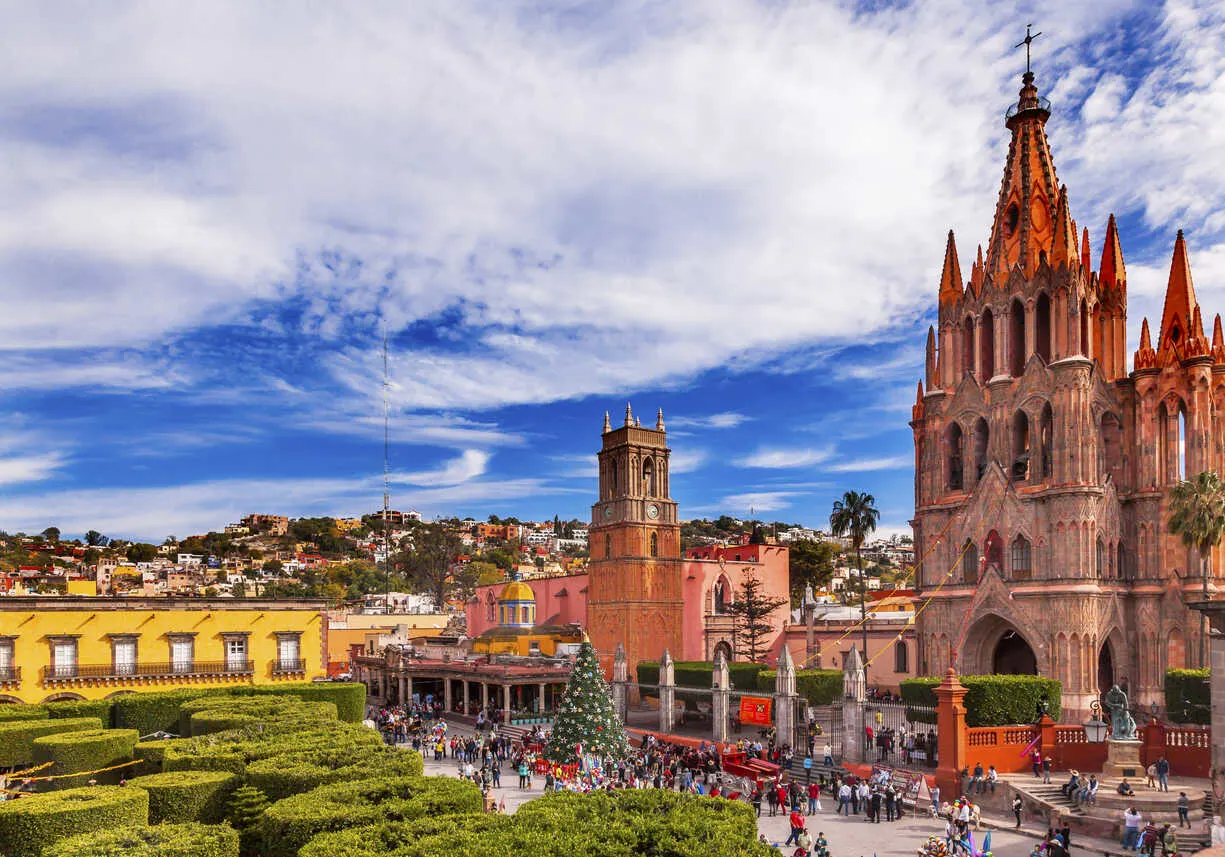
©iStock.com/bpperry
Emboldened by our slow travel experiences, we made the decision in early 2024 to sell our home in Tennessee, bank the proceeds, and spend the next two to three years roaming the world as slow travelers. We closed on the sale in mid-April and set off with just one suitcase and one carry-on item each to start our new life with a trip to Mexico.
Why five weeks? Well, that first week was a blow-off week. After rushing around with all the details of packing, selling, and giving away our belongings as we got ready to sell our home, we needed a break!
So our first stop was your typical week-at-the-beach, this time doing a condo exchange for a nice suite in the Yucatan resort town of Playa del Carmen. We walked the beach, swam in the pool, ate in restaurants, and paid no attention whatsoever to a budget. We did take a side trip by ferry to Cozumel, but that was about as ambitious as we got. After all, being a slow traveler doesn’t mean you can’t just take a beach break once in a while.
Our slow travel began when we transferred to the colonial mountain town of San Miguel de Allende. There we checked into another one-bedroom apartment ($1,850 for the month) that was in the heart of the historic district. We also were only a two-minute walk from the local market, so we were all set to enjoy our month.
We settled into trying to live as much as we could like the locals around us. Although a couple of trips to the big grocery stores were inevitable, we did most of our shopping at the local market, the small convenience stores around us, and on two memorable occasions, the wild “Tuesday Market,” which has to be seen to be believed. Over an acre of produce, meats, and any other household or clothing item you can name.
We toured some of the local houses, walked around admiring the churches and parks, and visited with a few expat friends, but for the most part, we just enjoyed soaking up the local culture. We even started taking siestas in the warm afternoons!
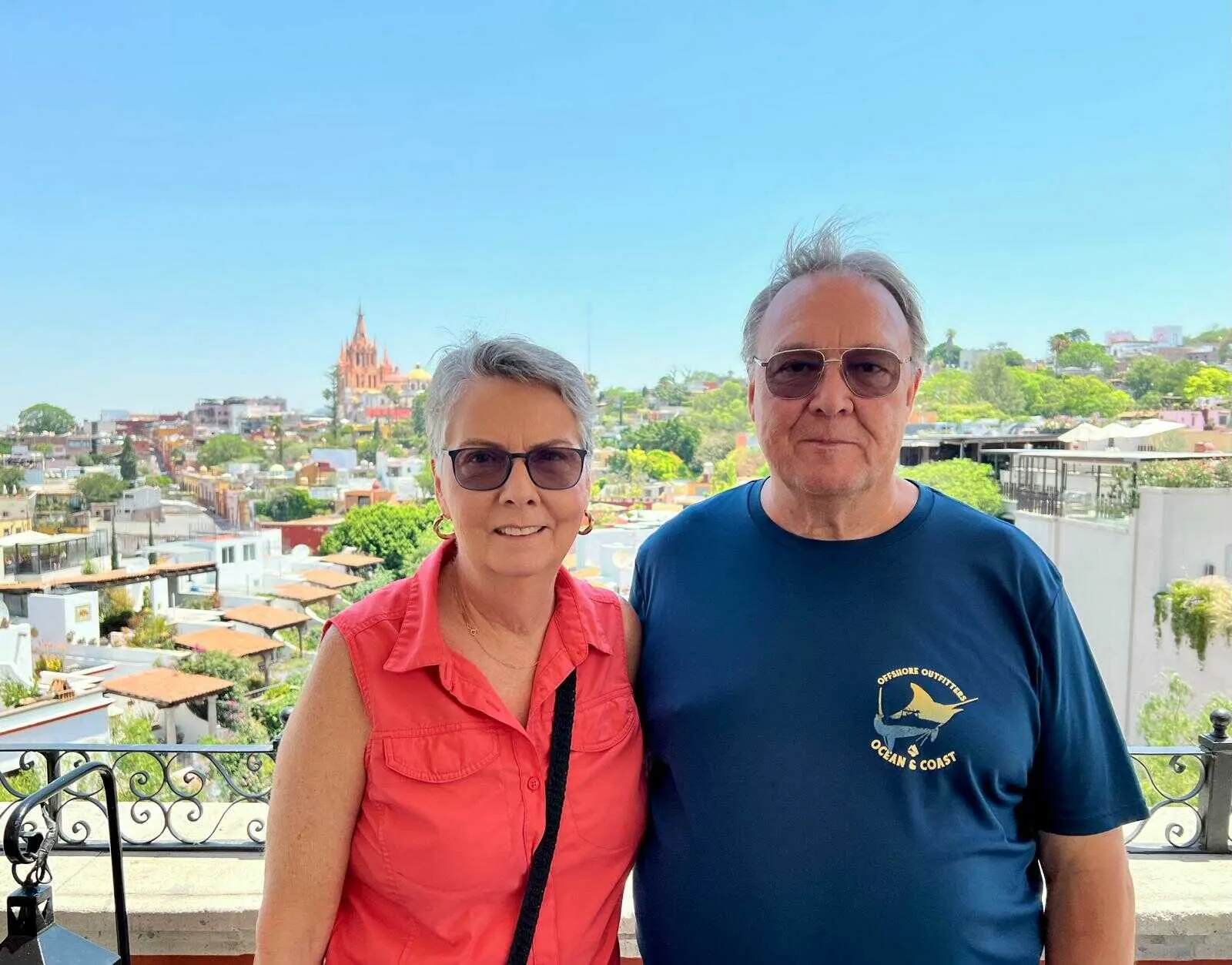
They spent a month in San Miguel, soaking in its vibrant culture and colorful charm.|©Jim Santos
There were parades, dances, music, and some sort of festival celebration at least half of the days during our stay. We started to enjoy San Miguel so much and felt so at home that we contacted a realtor and looked at a few properties. We had to remind ourselves that this is just our first step into full-time roaming; let’s give it some time and see more of the world.
On the plane back to the US to spend some time with family and friends, we were already planning our next slow travel adventure. We’ll be spending about 70 days in Eastern Europe, exploring by train, bus, and ferry. We will take a short break to go back to the US for the International Living Ultimate Go Overseas Bootcamp in Las Vegas, Nevada, and then we are off again, this time to England for a couple of pet-sitting gigs, and then we are bound for Ireland.
After that? We don’t really know. We’ve kicked around some ideas, like wintering in Morocco, or possibly southern Albania. For us, not knowing is part of the freedom that comes with being slow travelers. When people ask us, “Isn’t it scary after selling your house? You’re homeless!” we just smile and tell them we’re okay. For us now, as slow travelers, the world is our home.
In all sorts of beautiful, welcoming, culturally rich, saner places around the world, you can live well from $2,000 a month (all in, housing included). Sign up for our free daily IL Postcards e-letter and we’ll immediately send you a free report on the WORLD’S # 1 RETIREMENT HAVEN— plus 9 more spots you should have on your radar. Each day, you’ll earn about the best places to move to, retire, travel, buy real estate, and enjoy a good life for less, overseas.
By submitting your email address, you will receive a free subscription to IL Postcards and special offers from International Living and our affiliates. You can unsubscribe at any time, and we encourage you to read more about our Privacy Policy.


